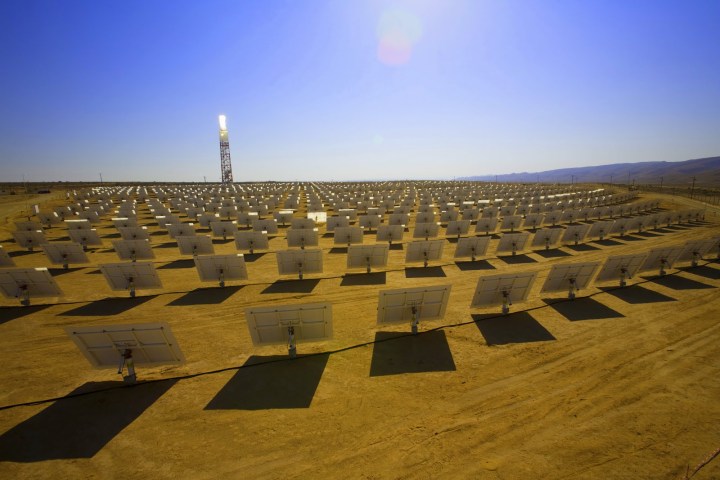
One of the biggest problems with renewable energy is that it’s often unreliable. Solar panels and wind turbines can only work when it’s sunny or the wind is blowing, and there’s no easy or inexpensive way to store excess power for use on low-producing days. For these reasons, a grid powered entirely by renewable energy would be unstable — but engineers are working on a possible solution. Stanford engineering professor Mark Jacobson and colleague Mark Delucchi at the University of California Berkeley believe that the energy can be stored underground for later retrieval, and the two have developed detailed plans on how it can be done.
For example, solar heat gathered on rooftops during the summer could be stored in rocks or soil to use during the winter for heat. On the flip side, excess energy generation during the summer could produce ice which could be used to cool homes during periods where electricity costs are high. Excess electricity could even be used to create hydrogen for use in energy cells in vehicles, or to produce even more electricity through other means. Other sources of energy would come from wind turbines and hydroelectric plants, all with the benefit of zero emissions.
It’s a bold plan; one that sounds somewhat out-there and hard to implement, but Jacobson has complete faith in it. He believes such a system could be developed and put in place by as early as 2050 if the country commits to a 100 percent renewable energy target.
This isn’t the first time that Jacobson has taken a spot the forefront of renewable energy innovation though: he’s published similar studies in the past claiming a 100 percent renewable energy future is possible. Those studies were the target of a great deal of pushback from the industry, mainly because there was no method to actually store energy generated cheaply (and the obvious special interests working for the fossil fuel industry). Now under Jacobson’s new plan, there is.
“Skeptics have never studied a system of 100 percent clean, renewable energy for all purposes, and particularly one that combines low-cost storage with demand response and some hydrogen, as in this new paradigm,” he argues.
Communities already exists that use concepts like what Jacobson proposes. Homes in the Drake Landing Solar Community in Alberta are heated by solar energy that is collected during the summer. The energy — stored in rocks and soil — is enough to heat 52 homes, all with close to no impact on thee environment. The environmental friendliness of Jacobson’s ideas is one of it’s greatest benefits, he argues.
“Most energy would be local,” Jacobson says. “You can eliminate a lot of fuel emissions, just because you won’t have to transport oil in tankers across the ocean, you won’t have to use trains of coal cars to ship the coal.”
Editors' Recommendations
- ‘World’s largest sundial’ to double as green energy provider
- Experimental ‘blowhole’ renewable energy could be on its way to the U.S.
- Lithium-ion is just the beginning. Here’s a peek at the future of batteries
- This monstrous, 826-ton wave buoy turns rough seas into renewable energy


